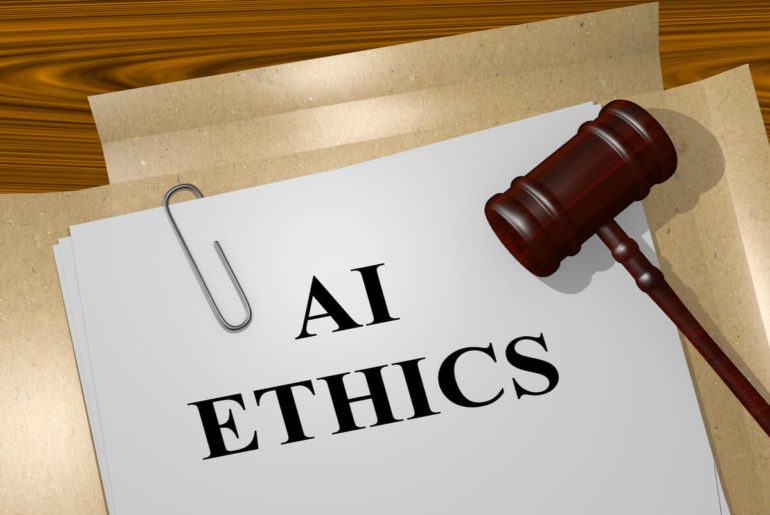The proliferation of artificial intelligence and algorithmic decision-making has helped shape myriad aspects of our society: From facial recognition to deep fake technology to criminal justice and health care, their applications are seemingly endless. Across these contexts, the story of applied algorithmic decision-making is one of both promise and peril. Given the novelty, scale, and opacity involved in many applications of these technologies, the stakes are often incredibly high.
This is the introduction to FTC Commissioner Rebecca Kelly Slaughter’s whitepaper: Algorithms and Economic Justice: A Taxonomy of Harms and a Path Forward for the Federal Trade Commission. If you have been keeping up with data-driven and algorithmic decision-making, analytics, machine learning, AI, and their applications, you can tell it’s spot on. The 63-page Whitepaper does not disappoint.
Slaughter worked on the whitepaper with her FTC colleagues Janice Kopec and Mohamad Batal. Their work was supported by Immuta, and it has just been published as part of the Yale Law School Information Society Project Digital Future Whitepapers series. The Digital Future Whitepaper Series, launched in 2020, is a venue for leading global thinkers to question the impact of digital technologies on law and society.
The series aims to provide academics, researchers, and practitioners a forum to describe novel challenges of data and regulation, to confront core assumptions about law and technology, and to propose new ways to align legal and ethical frameworks to the problems of the digital world.
Slaughter notes that in recent years, algorithmic decision-making has produced biased, discriminatory, and otherwise problematic outcomes in some of the most important areas of the American economy. Her work provides a baseline taxonomy of algorithmic harms that portend injustice, describing both the harms themselves and the technical mechanisms that drive those harms.
In addition, it describes Slaughter’s view of how the FTC’s existing tools can and should be aggressively applied to thwart injustice, and explores how new legislation or an FTC rulemaking could help structurally address the harms generated by algorithmic decision-making.
Faulty inputs, faulty conclusions, failure to adequately test
Slaughter identifies three ways in which flaws in algorithm design can produce harmful results: Faulty inputs, faulty conclusions, and failure to adequately test.
The value of a machine learning algorithm is inherently related to the quality of the data used to develop it, and faulty inputs can produce thoroughly problematic outcomes. This broad concept is captured in the familiar phrase: “Garbage in, garbage out.”
The data used to develop a machine-learning algorithm might be skewed because individual data points reflect problematic human biases or because the overall dataset is not adequately representative. Often skewed training data reflect historical and enduring patterns of prejudice or inequality, and when they do, these faulty inputs can create biased algorithms that exacerbate injustice, Slaughter notes.
She cites some high-profile examples of faulty inputs, such as Amazon’s failed attempt to develop a hiring algorithm driven by machine learning, and the International Baccalaureate’s and UK’s A-Level exams. In all of those cases, the algorithms introduced to automate decisions kept identifying patterns of bias in the data used to train them and attempted to reproduce them.
A different type of problem involves feeding data into algorithms that generate conclusions that are inaccurate or misleading — perhaps better phrased as “data in, garbage out.” This type of flaw, faulty conclusions, undergirds fears about the rapidly proliferating field of AI-driven “affect recognition” technology and is often fueled by failures in experimental design.


Machine learning often works as a black box, and as applications are becoming more impactful, that can be problematic. Image: Immuta
Slaughter describes situations in which algorithms attempt to find patterns in, and reach conclusions based on, certain types of physical presentations, and mannerisms. But, she notes, as one might expect, human character cannot be reduced to a set of objective, observable factors. Slaughter highlights the use of affect recognition technology in hiring as particularly problematic.
Some more so than others, such as a company that purports to profile more than sixty personality traits relevant to job performance — from “resourceful” to “adventurous” to “cultured” — all based on an algorithm’s analysis of an applicant’s 30-second recorded video cover letter.
Despite the veneer of objectivity that comes from throwing around terms such as “AI” and “machine learning,” in many contexts, the technology is still deeply imperfect, and many argue that its use is nothing less than pseudo-science.
But even algorithms designed with care and good intentions can still produce biased or harmful outcomes that are unanticipated, Slaughter notes. Too often, algorithms are deployed without adequate testing that could uncover these unwelcome outcomes before they harm people in the real world.
Slaughter mentions bias in search results uncovered when testing with Google’s and LinkedIn’s search but focuses on the health care field. A recent study found racial bias in a widely used machine learning algorithm intended to improve access to care for high-risk patients with chronic health problems.
The algorithm used health care costs as a proxy for health needs, but for a variety of reasons unrelated to health needs, white patients spend more on health care than their equally sick Black counterparts do. Using health care costs to predict health needs, therefore, caused the algorithm to disproportionately flag white patients for additional care.
Researchers estimated that as a result of this embedded bias, the number of Black patients identified for extra care was reduced by more than half. The researchers who uncovered the flaw in the algorithm were able to do so because they looked beyond the algorithm itself to the outcomes it produced and because they had access to enough data to conduct a meaningful inquiry.
When the researchers identified the flaw, the algorithm’s manufacturer worked with them to mitigate its impact, ultimately reducing bias by 84% — exactly the type of bias reduction and harm mitigation that testing and modification seeks to achieve, Slaughter notes.
Facilitating proxy discrimination, enabling surveillance capitalism, inhibiting competition in markets
Not all harmful consequences of algorithms stem from design flaws. Slaughter also identifies three ways in which sophisticated algorithms can generate systemic harm: by facilitating proxy discrimination, by enabling surveillance capitalism, and by inhibiting competition in markets.
Proxy discrimination is the use of one or more facially neutral variables to stand in for a legally protected trait, often resulting in disparate treatment of or disparate impact on protected classes for certain economic, social, and civic opportunities. In other words, these algorithms identify seemingly neutral characteristics to create groups that closely mirror a protected class, and these “proxies” are used for inclusion or exclusion.
Slaughter mentions some high-profile cases of proxy discrimination: The Department of Housing and Urban Development allegations against Facebook’s tool called “Lookalike Audiences,” showings of job openings to various audiences, and FinTech innovations that can enable the continuation of historical bias to deny access to the credit system or to efficiently target high-interest products to those who can least afford them.
An additional way algorithmic decision making can fuel broader social challenges is the role it plays in the system of surveillance capitalism, which Slaughter defines as a business model that systematically erodes privacy, promotes misinformation and disinformation, drives radicalization, undermines consumers’ mental health, and reduces or eliminates consumers’ choices.


AI Ethics has very real ramifications that are getting increasingly more widespread and important
Through constant, data-driven adjustments, Slaughter notes, algorithms that process consumer data, often in real-time, evolve, and “improve” in a relentless effort to capture and monetize as much attention from as many people as possible. Many surveillance capitalism enterprises are remarkably successful at using algorithms to “optimize” for consumers’ attention with little regard for downstream consequences.
Slaughter examines the case of YouTube content addressed at children and how it’s been weaponized. The FTC has dealt with this, and Slaughter notes that YouTube announced they will use machine learning to actively search for mis-designated content and automatically apply age restrictions.
While this sounds like the technological backstop Slaughter requested in that case, she notes two major differences: First, it is entirely voluntary, and second, both its application and effectiveness are opaque. That, she argues, brings up a broader set of concerns about surveillance capitalism — one that extends beyond any single platform.
The pitfalls associated with algorithmic decision-making sound most obviously in the laws the FTC enforces through its consumer protection mission, Slaughter notes. But the FTC is also responsible for promoting competition, and the threats posed by algorithms profoundly affect that mission as well.
Moreover, she goes on to add, these two missions are not actually distinct, and problems — including those related to algorithms and economic justice — need to be considered with both competition and consumer protection lenses.
Slaughter examines topics including traditional antitrust fare such as pricing and collusion, as well as more novel questions such as the implications of the use of algorithms by dominant digital firms to entrench market power and to engage in exclusionary practices.
Toward a rational debate on AI Ethics
Overall, the whitepaper seems well-researched and shows a good overview of the subject matter. While the paper’s sections on using the FTC’s current authorities to better protect consumers and proposed new legislative and regulatory solutions refer to legal tools we do not feel qualified to report on, we encourage interested readers to read them.
We would also like to note, however, that while it’s important to be aware of AI ethics and the far-reaching consequences of data and algorithms, it’s equally important to maintain a constructive and unbiased attitude when it comes to issues that are often subjective and open to interpretation.
Overzealous attitude in debates that often take place on social media, where context and intent can easily be misinterpreted and misrepresented, may not be the most constructive way to make progress. Case in point, AI figureheads Yann LeCun and Pedro Domingo’s misadventures.
When it comes to AI ethics, we need to go beyond sensationalism and toward a well-informed and, well, data-driven approach. Slaughter’s work seems like a step in that direction.



